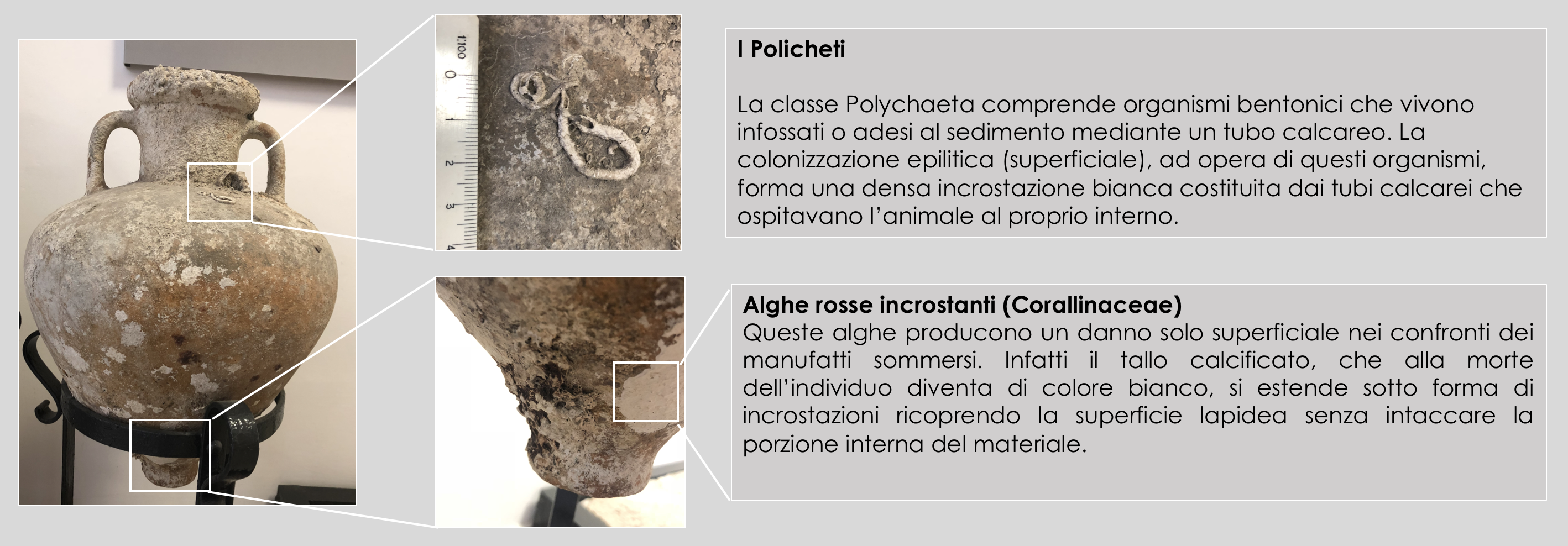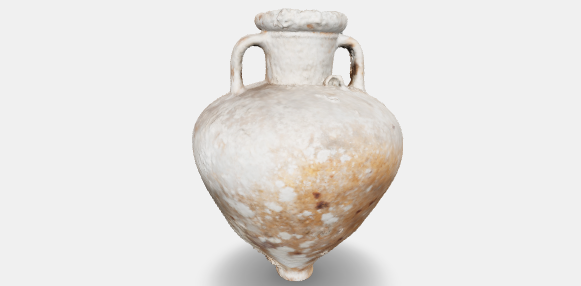An intact amphora of Corinthian B type, Greek-Siceliote production. Rim with an echinoid band. Tall neck from which the handles ramify just below the rim. Globular body, tending towards biconical. Bottom with a short, truncated foot.
The Corinthian amphorae were introduced into a large part of Mediterranean, with a large scale production around the last quarter of the VI century B.C. It is a typical transport amphora for which various centres of production were identified in Corinth, Corfu and Sybaris.
In his famous classification of Corynthian amphorae, Koehler (1978, 1981, 1992) distinguished two different types of the B Corynthian amphora:
– the most ancient one, dating from the VI to the beginning of the V century B.C., characterised by a thickened rim with an almond-shaped section, a “turnip” shape, a short and a blunt foot.
– the most recent one, dating from the V to the III century B.C, characterized by a thickened rim with a nearly triangular section, a spherical or ovoid body and a small conical tip.
The amphora presents an epilithic colonisation located mainly on the top and the lower part of the neck, whereas it is less diffused below the handles. These are encrusting organisms that do not produce a considerable degradation: in particular, marine worms (Polychaeta serpulidae) with their characteristic calcareous tubes and encrusting red algae thalli that form a white and thickly encrusted patina on the neck and at the base.

KOEHLER 1978; KOEHLER 1981, pp. 449-458; KOEHLER 1992, pp. 265-283
Koehler C.G. 1978, Corinthian A and B Transport Amphoras, Ph.D. Dissertation, Princeton University.
Koehler C. G. 1981, Corinthian developments in the study of trade in the fifth century, Hesperia, Vol. 50, pp. 449–458.
Koehler C. G. 1992, A Brief Typology and Chronologyof Corinthian Transport Amphoras, in Greek Amphoras, V.I. Kats and S.Iu. Monakhov (eds.), Saratov, pp. 265-283.



